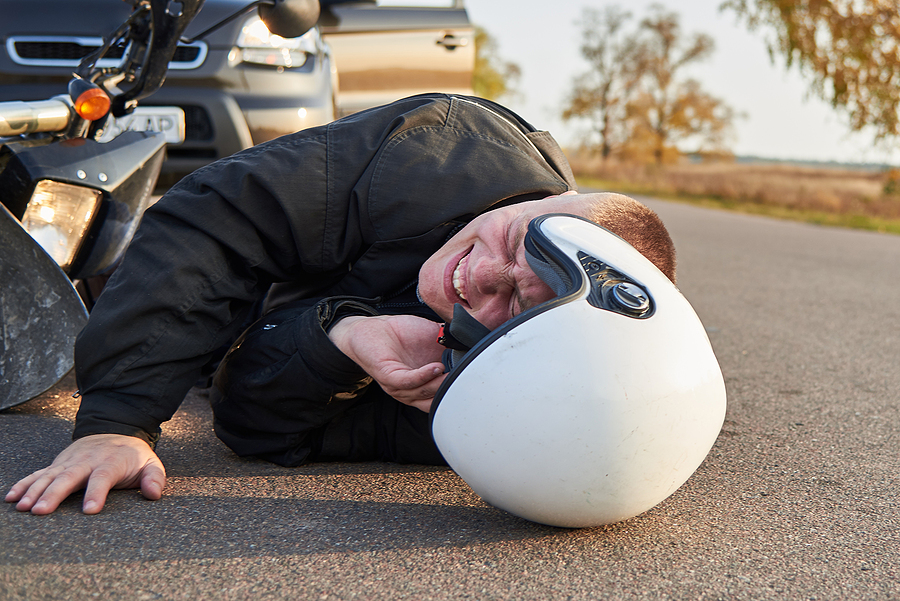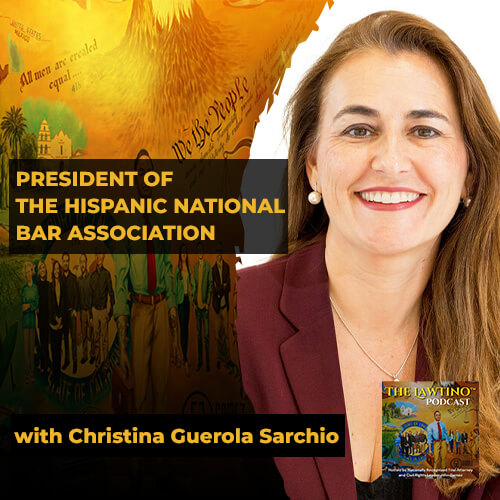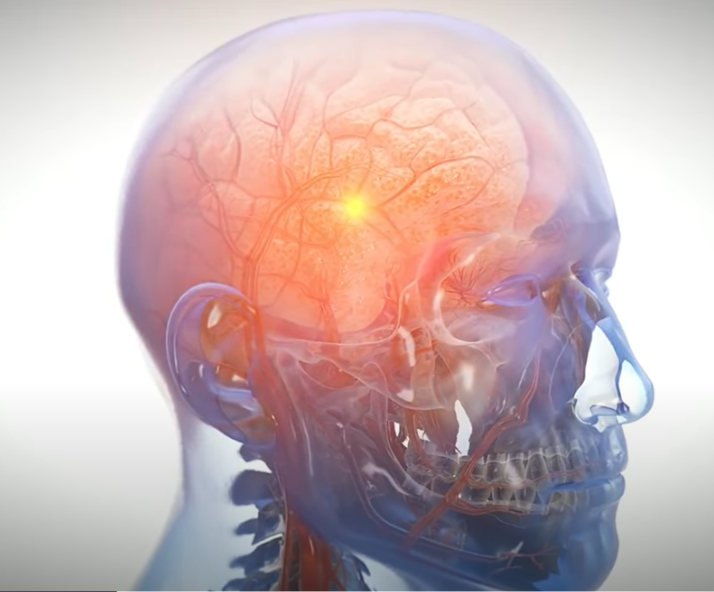The Rules You Must Follow When Sharing the Road With Motorcycles
Bikers need to follow a set of comprehensive laws and regulations when riding on the roads in California. Other drivers sharing the road with them, however, must also take certain precautions to decrease the risk of an accident.
With California’s scenic highways and great climate, you can find yourself sharing the road with a motorcycle at any time of the year. As a driver, you bear a strong responsibility for helping to keep those motorcycle riders safe. In addition to adhering to California laws relating to motorcycles, you may also want to follow a few best practices that will help keep you and those bikers safer when they take to the roads.
1. Allow the motorcycle to use its whole lane.
As you travel down a highway with a motorcycle in the lane next to you, you may find yourself tempted to allow your vehicle to creep into that lane. After all, a motorcycle does not take up as much room as a standard vehicle. If you need a little extra room or grow distracted, you may take up some of the room in the biker’s lane.
To maintain a high level of safety for everyone, however, make sure that you allow the motorcycle to take up its entire lane. Do not drift into that lane, which could risk sideswiping the motorcycle or its driver. You should also avoid changing lanes on top of a motorcycle.
2. Allow plenty of following distance and do not tailgate a motorcycle.
Motorcycles have smaller bodies, strong engines, and fast brakes. As a result, they can often stop and maneuver more easily than a larger passenger vehicle. Because of their small size, you might find yourself following closer than you would with a larger vehicle, especially if you are in a hurry to reach your destination.
Keep in mind, however, that a biker can—and might—stop much faster than you. If you follow too closely, you might not have adequate time to prevent hitting the motorcycle, especially if you travel at a high rate of speed. Tailgating can cause a catastrophic accident. Instead, allow the motorcycle plenty of room. You may even want to allow a motorcycle more room than you do a traditional passenger vehicle or big truck, since motorcycles can stop faster and you may have more trouble judging the biker’s location on the road.
If you do not have at least three seconds between the tail end of a motorcycle passing an object at the side of the road and your vehicle reaching that same object, you may be following too close to the motorcycle. Instead, slow your speed and give the motorcycle plenty of room to maneuver.
3. Yield for motorcycles just like you would for larger passenger vehicles.
Sometimes, you may find yourself tempted to speed up to overtake a motorcycle. Some drivers simply do not like sharing the road with motorcycles. They may make more noise, or it can prove more difficult to keep track of them. Once you see a motorcycle approaching, however, accord it the same rights you would offer a passenger vehicle. Yield, if needed, when coming through a red light or stop sign, or when merging into traffic.
Do not try to merge into traffic on top of a motorcycle or assume that the driver can simply get out of your way. Instead, leave plenty of room for the motorcycle, just like you would for a larger passenger vehicle.
4. Make sure you pass motorcycles legally.
You can pass motorcycles the same way you would pass a larger passenger vehicle when in an area that allows for passing. You cannot, however, cut off a motorcycle or try to force the biker to move over to make room for you on the road. Leave plenty of room in front of the motorcycle before you move over, and signal appropriately. If needed, wait for the biker to signal you that you can safely move in front of him. When in doubt, or if you lose track of the motorcycle in your mirrors, wait until you find him and know you have plenty of room before changing lanes.
Often, you will know that a motorcycle has joined you on the road and that you need to leave plenty of room. If you know you need to change lanes soon, make sure you know exactly where the biker is and leave him plenty of room to maneuver.
5. Maintain the speed limit.
Each time you increase your speed by approximately one kilometer per hour, you increase your risk of a crash with serious injuries by around 3 percent. For bikers, accidents at high rates of speed can prove even more catastrophic. While helmet use can reduce the risk of severe traumatic brain injury by approximately 67 percent, it does not eliminate it. Bikers have little protection from the hazards they may face out on the road, even if they wear full protective gear.
Accidents involving high rates of speed, even if bikers exercise every caution possible, can leave the motorcyclist suffering from traumatic brain injury, amputation, spinal cord injuries, or multiple broken bones. A motorcyclist may also suffer from severe road rash.
As a driver sharing the road with a motorcycle, make sure you control your speed, especially in poor weather conditions. In the rain, even well-maintained roads throughout California can quickly become slick, and motorcycle riders may struggle with decreased overall visibility.
To help make it easier to keep to the speed limit, consider leaving for your destination earlier. Many drivers, when stressed, become more likely to speed, even though they know that it will not actually help them reach their destination faster. By leaving yourself plenty of time to reach your destination, you decrease your stress and help moderate your speed, which can help keep you and the motorcycles that share the road with you safer overall.
6. Come to a complete stop in intersections.
Sometimes, when you approach an intersection, you may decide to simply ease right on through it. You do not see anyone coming at first glance, and you may feel that coming to a complete stop will waste valuable time.
When you approach a stop sign or an intersection with a red light, however, always come to a complete stop. Check around you in all directions before proceeding through the intersection, and do not try to rush. Motorcycles may approach the intersection faster than you think, giving the motorcycle right of way. If the driver meets you in the middle of the intersection, the damage to the smaller vehicle could prove catastrophic.
Keep in mind that motorcycles have a much smaller visual profile than the larger passenger vehicles you automatically look for as you get closer to an intersection. Your brain may, in some cases, fail to fully process the presence of a motorcycle coming toward you, especially as you grow tired or have spent numerous hours on the road. Unfortunately, this can prevent you from noticing that a motorcycle has entered the intersection until you have already started moving your car.
To help keep everyone sharing the road with you safer, look twice before proceeding through the intersection. It might take a few seconds longer, but those few seconds could make all the difference for a biker in that intersection.
7. Exercise extra caution when turning left.
While the law does not state that you must exercise additional caution when turning left, left turns can prove trickier than other maneuvers on the road. To safely execute a left turn, you must often turn across existing traffic. You may need to stay more aware than you would if you were navigating only a single lane.
If you need to make a left turn, come to a full stop before pulling across traffic. Look both ways to make sure that no one else inhabits those lanes. You may need to double-check to make sure that a motorcycle does not share that space. When in doubt, wait to make the turn. Sometimes, drivers will rush across traffic to get to their destination faster. This strategy can significantly increase accident risk, especially when motorcycles share the road with you.
8. Exercise courtesy and compassion.
Many people struggle to share the road courteously. When you drive a larger vehicle, you may find a motorcycle, or even a group of motorcycles, getting in your way. They may seem to take up more than their fair share of space on the road, or they might drive more slowly than you would prefer, stretching out the time needed for you to reach your destination and making it harder for you to keep up with traffic around you.
To keep yourself safe on the road and protect motorcyclists who might share that road with you, however, practice courtesy and compassion in your driving. If you notice a motorcycle waiting to get out, consider giving the rider enough room to do so, even if you need to slow down or even tap your brakes for a moment. When you notice a motorcycle traveling slowly, keep in mind that the driver could need time to look around while checking directions, could want to appreciate some of California’s gorgeous scenery, or could simply prefer to drive more slowly due to a desire to follow the law (or inexperience with the bike).
Imagine yourself in the biker’s position. Keep in mind how intimidating large vehicles can prove from the back of a motorcycle. Then, drive the way you would want others to drive around you.
9. Keep an eye out for turning motorcycles.
In a car, once you complete a turn, your turn signal automatically turns off. Not only does this make it easier to keep up with where other vehicles around you plan to go, it also means that you do not have to think about turning off the turn signal every time you need to make a turn.
For motorcycles, however, that does not always hold true. Until recently, motorcycles did not have turn signals that turned off on their own, after the biker completes a turn. Even those that have them may not always turn off after a small turn or a lane change.
If you notice a biker with a flashing turn signal, back off and give them room to turn safely. Keep in mind that you may need more room than you think to come to a full stop as you approach the biker. Even if the motorcycle’s turn signal continues to flash for some time, indicating that the rider does not have an immediate plan to turn, you may still want to back off and give more room; if the rider does decide to turn, you have plenty of room to come to a safe stop behind.
10. Stay aware of your blind spots.
Many large passenger vehicles, including SUVs, trucks, and vans, have blind spots large enough to lose a small car.
Motorcycles can get lost in your blind spots even more easily.
During motorcycle season in particular, stay aware of your blind spots. Get a good feel for where you can find those blind spots on your vehicle and how large a vehicle can disappear inside it. Even a small car may have more than enough room to lose a motorcycle. Test it out. Learn where those blind spots are. In some cases, you may shift to look and gain better visibility. In others, however, you may simply have to learn how to deal with that blind spot effectively.
When you know the locations of your blind spots, you can avoid turning or changing lanes if you have no idea what has turned into them, which can significantly reduce your risk of an accident.
11. Track motorcycles around you.
You noticed a motorcycle pulling up behind you about half a mile ago, but it seems to have disappeared in the time since then. You need to change lanes, so you signal and start to move over, only to hear a wild honk—or worse, a crash. A motorcycle pulled into your blind spot, and since you lost track of it, you had no idea that it entered your blind spot.
You cannot track every car around you on the road all the time. Your eyes will typically stay fixed on the road in front of you, not necessarily the road behind you. Keeping track of what goes on around you, however, can go a long way toward reducing accident risk and keeping bikers, in particular, safe when you share the road with them.
If you notice a motorcycle sharing the road with you, especially if you know you will need to change lanes or make a turn soon, pay attention to the biker’s location. You should know if the motorcycle changes lanes, moves behind you, or pulls off the road. Pay special attention and keep track of motorcycles in your mirrors when possible.
12. Use your signals appropriately.
Your turn signals let everyone around you know where you plan to go: whether you plan to change lanes or make a turn. Those signals serve as an important warning to other drivers, who can then base their actions on your intentions: slowing down to give you room to turn, for example, or not entering the space you need to occupy in a lane as you get ready to change lanes.
For motorcycle riders, those turn signals can prove particularly important. Often, motorcycle riders will need to make decisions sooner than other drivers. They may also need to worry more about entering a lane as your turn signal flashes to indicate that you plan to change lanes, or they might need to tap the horn to let you know that you cannot change lanes until they have a chance to move.
Signal well in advance of any planned turns. When changing lanes, try not to signal at the last minute. Instead, give yourself plenty of time to signal and, therefore, other drivers, especially bikers, plenty of time to react to your plans.
13. Avoid distractions while driving.
Distracted driving can involve manual, visual, or cognitive distraction. Manual distraction takes one or both hands off of the wheel, which can substantially slow your response time and make it more difficult for you to prevent an accident. Visual distractions take your eyes off of the road. Cognitive distractions, on the other hand, remove your attention from the task of driving.
When behind the wheel, staying focused keeps your attention on the road and your responses at peak efficiency. You have a much lower risk of causing or contributing to an accident when you know everything that happens on the road around you. Unfortunately, all too many drivers grow distracted behind the wheel, especially when they must travel significant distances. Simply eating or drinking behind the wheel can pose a potent distraction, especially if you suffer a spill or a drip. Checking your phone, programming your GPS, and changing the settings on the radio can all take your hands, eyes, and attention off of the road.
Taking your attention off the road can prove particularly disastrous when you share the road with motorcycles. While distracted, you might fail to notice a motorcycle pulling onto the road with you or lose track of where that motorcycle went. When you later want to change lanes or make a turn, you may have no idea where the motorcyclist went.
When driving, drive. Do not check your phone, eat or drink messy foods, or try to put on makeup. Save those activities for your destination. If you must address an immediate concern, consider pulling off the road so that you can keep everyone around you safer.
14. Never drink and drive.
California law specifically prohibits drinking and driving, and for good reason. Drunk drivers have slowed reflexes, decreased awareness of the road around them, and erratic behaviors that can prove much more difficult to predict. They may ignore the rules of the road: speeding, driving erratically, or running stop signs and red lights.
For motorcycle riders on the road, drunk drivers can present a particular hazard. While a more maneuverable motorcycle can get out of the way quickly in the event of a swerving driver or potential accident, if the driver behaves erratically, the biker may not have the ability to predict the driver’s movements. Worse, the driver may not react fast enough to reduce the severity of an accident, causing more severe injury to the biker than other types of accidents.
As a driver on California roads, never drink and drive. If you go out and have drinks, wait at least an hour per drink before you get behind the wheel. If you know you have had too many drinks to drive safely, consider leaving your vehicle at the bar or restaurant and taking an Uber, Lyft, or taxi to your destination.
15. Avoid driving while drowsy.
Drowsy driving can have many of the same impacts as driving while drunk or distracted. Not only are drowsy drivers at a high risk of falling asleep behind the wheel, which could lead to an accident due to an out of control vehicle, drowsy drivers often struggle to pay attention and respond appropriately to the actions of others on the road. Drowsy drivers might not, for example, notice the presence of motorcycle riders on the road, or they might drift into the motorcycle’s lane, rather than holding in their own lanes.
If you find yourself getting drowsy behind the wheel, especially after a long time driving, you should pull off the road as soon as you can do so safely. Take a short nap, if needed. While caffeine, cold air, or loud music can temporarily engage your senses and decrease the odds that you will fall asleep for a short time, they may not help keep you awake long-term. Try to avoid driving during hours when you know you will naturally be more likely to fall asleep.
16. Exercise extra care in poor weather conditions.
During poor weather conditions, motorcycle drivers may have more trouble on the road. They may, for example, be more likely to slip on wet roads, since motorcycles have only two wheels to hold the road. Rain can also interfere more with a biker’s visibility, since it will strike directly on the helmet and may obstruct the wearer’s view. Helmets may have special treatments to help rain slide off, but they do not have windshield wipers.
Rain can also interfere with a biker’s focus, since driving rain can prove extremely uncomfortable behind the wheel.
Meanwhile, high winds can pose a substantial hazard. Motorcycles weigh less than other vehicles, so in high winds, they may get driven off of the road more easily. Inexperienced bikers, in particular, may have more trouble keeping their vehicles on the road in high winds.
If you share the road with a motorcycle in poor weather conditions, take particular precautions. Try not to speed by a motorcycle in wet conditions, since your wheels could kick up a high degree of water, which could serve as a serious hazard to bikers. Remain aware of your surroundings in high winds. Make sure you do not drift out of your lane, especially around motorcycles. Keep in mind that in some conditions, motorcycle riders may use you as a windbreak to help decrease the hazard to them and their vehicles.
17. Stay aware of night conditions and their impact on motorcycle riders.
At night, it is naturally more difficult to judge distance. You may have trouble, for example, keeping up with a motorcycle as he drives near you, or have more trouble determining how long it will take for a motorcycle rider to reach you as he approaches from the opposite lane. When in doubt, slow down. Do not pull out in front of an approaching headlight.
Some motorcycle riders also use flashing lights or other attention-grabbing lights that will help increase your odds of noticing them on the road. Those lights may prove distracting. Try to keep your eyes on your lane and on what goes on around you, not on the flashing lights. Avert your eyes as you get closer to the motorcycle rider, since it could lead to night blindness.
At night, you should also remember that your headlights can quickly blind a motorcycle rider. Turn off your brights any time you approach another vehicle, but exercise particular caution when driving near a motorcycle. You can blind a motorcycle from behind as your lights reflect off of mirrors, just as easily as you can driving toward one.
What to Do If You Have an Accident with a Motorcycle Rider
Despite all your precautions, you may find yourself involved in an accident with a biker. How you react after the accident can help protect you from facing more serious legal consequences and ensure that everyone involved gets needed medical attention.
1. Do not leave the scene of the accident.
Do not leave the scene of the accident unless you need to seek medical attention or transport someone else who needs to seek medical attention. Wait for the police to arrive.
2. Report the accident to the police.
California police will take a report of the accident, including your statement about how it occurred. Offer a factual statement that shares how you believe the accident occurred, including any problems you may have noted. For example, if you noticed the biker breaking the law or driving erratically, you might want to share that information with the responding officer.
While motorcycle accidents often get caused by the drivers of larger vehicles, frequently due to negligence or inattention, motorcycle riders can also cause serious accidents.

3. Summon medical attention, if needed.
If anyone suffered injuries in the accident, summon medical attention. When you call 911 to report the accident, it will summon an ambulance to the scene along with the police. Emergency medical personnel can help treat any injuries at the scene of the accident and provide transport to the hospital if needed.
If you suffered injuries, even if you believe you suffered even minor injuries, make sure you seek medical attention as soon as possible. Sometimes, doctors may identify injuries that you did not recognize at the time of the accident. If the biker caused your accident, you may also want to seek medical attention to serve as proof of when your injuries occurred.
4. Talk to an attorney, if needed.
If you believe that the biker caused your accident and you suffered injuries as a result of the motorcyclist’s actions, you may need to file a motorcycle accident claim as soon as possible to seek compensation for those injuries. A motorcycle accident attorney can help you better understand the compensation you deserve for your injuries and seek it if needed.
5. Notify your insurance company.
Any time you have an auto accident, you should contact your insurance company to notify them about the accident. Your insurance company will let you know how to proceed, including what information it needs if you caused the accident.
Gomez Trial Attorneys
655 West Broadway, Suite 1700
San Diego, Ca 92101
619-237-3490







